|
Laboratory for Synthesis and Measurement of Transport, Magnetic and Thermodynamic Properties
In this Laboratory, we conduct the synthesis of amorphous materials, metallic glasses, nanocrystalline alloys, polymers, high-temperature superconductors and, most recently, high-quality monocrystals of various types of topological insulators with superior properties (low charge carrier density and high mobility), as well as potential topological superconductors necessary for the detection of new physical phenomena anticipated in topological insulators. The synthesized samples are characterized by structure, transport, thermodynamic and magnetic properties measurements. The current equipment includes several ovens (up to 1600 °C), a differential scanning calorimeter (100-830 K), a helium refrigerator (10-400 K), a cryostat with a 10 T magnet (1.7-400 K), and an RF device, along with the necessary setup for measuring transport, thermodynamical and magnetic properties. The principal research interests of the Laboratory are the development of new materials, the investigation of collective phenomena (superconductivity and magnetism), weak localization, spin-orbit interaction and spin scattering in metallic glasses, phenomena that arise as a consequence of Dirac dispersion, the spin momentum locking effect, and the π-Berry phase of topologically protected metal sufrace phases. Special emphasis is put on the development of highly sensitive methods for measuring magnetization - using a piezo-resistive micro-cantilever, heat capacity and thermoelectrical effects.
|
Group leader
Ivan Kokanović, Associate professor
Group members
1. Mario Novak, Assistant professor
2. Mirko Baćani, Ph.D.
3. Sanda Pleslić, Ph.D.
4. Filip Orbanić, Ph.D. student
|
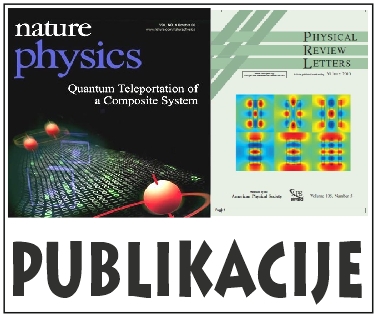 |
|

 Pristupačnost
Pristupačnost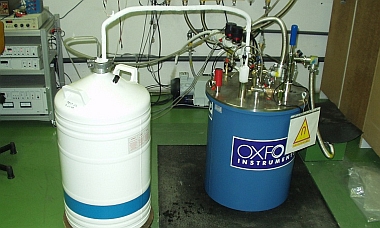

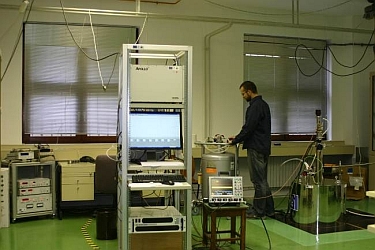
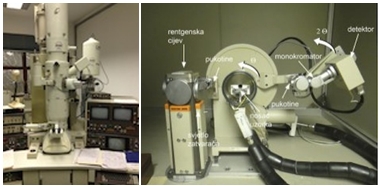 The Laboratory investigates the micro-structure of modern materials. It is equipped with an X-ray diffractometer for polycrystalline samples, and a high-resolution transmission electron microscope, along with a complete sample preparation setup.
The Laboratory investigates the micro-structure of modern materials. It is equipped with an X-ray diffractometer for polycrystalline samples, and a high-resolution transmission electron microscope, along with a complete sample preparation setup.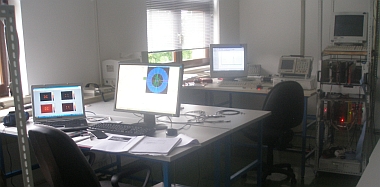 The detectors prepared and tested in this laboratory are used for fundamental research in experimental nuclear physics conducted in accelerator centers MAMI (Mainz Microtron), Germany, DAFNE (Laboratori Nazionali di Frascati), Italy, and CERN, Switzerland. The laboratory is also engaged in the application of nuclear methods: materials, medicine and environment.
The detectors prepared and tested in this laboratory are used for fundamental research in experimental nuclear physics conducted in accelerator centers MAMI (Mainz Microtron), Germany, DAFNE (Laboratori Nazionali di Frascati), Italy, and CERN, Switzerland. The laboratory is also engaged in the application of nuclear methods: materials, medicine and environment.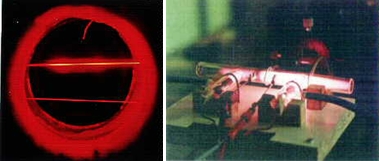 Research conducted in this laboratory is directed towards the investigation of atomic and molecular processes in high-pressure discharges, low-temperature plasma properties, and the interaction of atoms and laser light with alkaline vapor or ionized gas.
Research conducted in this laboratory is directed towards the investigation of atomic and molecular processes in high-pressure discharges, low-temperature plasma properties, and the interaction of atoms and laser light with alkaline vapor or ionized gas.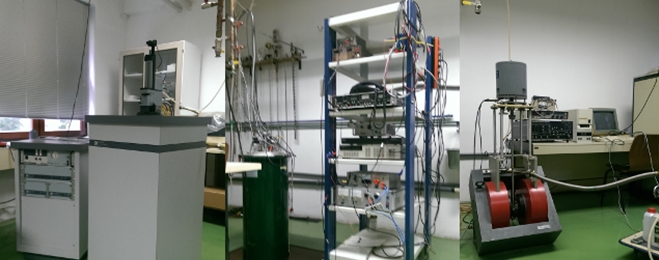 In this Laboratory the magnetic and electrical properties of various materials are investigated, including static magnetization and AC susceptibility, electrical transport in magnetic fields and magnetic properties in electric fields. This enables the study of magnetic ordering and dynamics in nano-magnets, interactions in various complex materials, critical phenomena in superconductors and magnetics, magnetoelectric effects along with numerous other interesting occurrences of modern physics. The investigated systems include magnetic nano-particles, magnetic-ion complexes, organic magnetic materials, multiferroics, superconductors, alloys, complex magnetic structures and other materials of importance for basic and applied physics. The Laboratory equipment includes a SQUID and a vibrating sample magnetometer, an AC susceptometer and the instrumentation necessary for electric transport measurement, which enables precise and exhaustive measurements of magnetic and electric properties in a wide range of temperatures (2-1000 K) and magnetic fields ( up to 18 T), appropriate both for basic characterization of new materials and detailed studies of interesting phenomena.
In this Laboratory the magnetic and electrical properties of various materials are investigated, including static magnetization and AC susceptibility, electrical transport in magnetic fields and magnetic properties in electric fields. This enables the study of magnetic ordering and dynamics in nano-magnets, interactions in various complex materials, critical phenomena in superconductors and magnetics, magnetoelectric effects along with numerous other interesting occurrences of modern physics. The investigated systems include magnetic nano-particles, magnetic-ion complexes, organic magnetic materials, multiferroics, superconductors, alloys, complex magnetic structures and other materials of importance for basic and applied physics. The Laboratory equipment includes a SQUID and a vibrating sample magnetometer, an AC susceptometer and the instrumentation necessary for electric transport measurement, which enables precise and exhaustive measurements of magnetic and electric properties in a wide range of temperatures (2-1000 K) and magnetic fields ( up to 18 T), appropriate both for basic characterization of new materials and detailed studies of interesting phenomena.